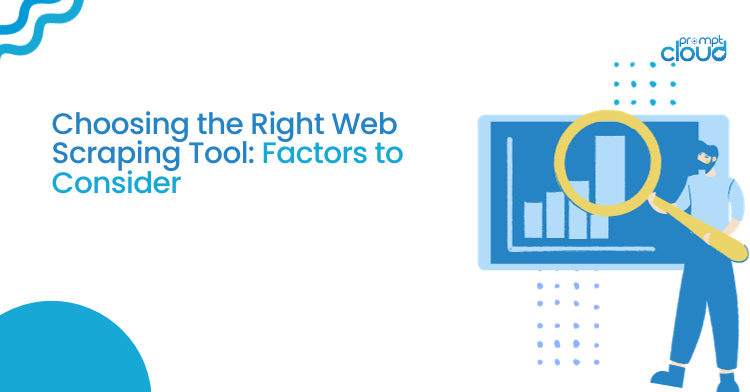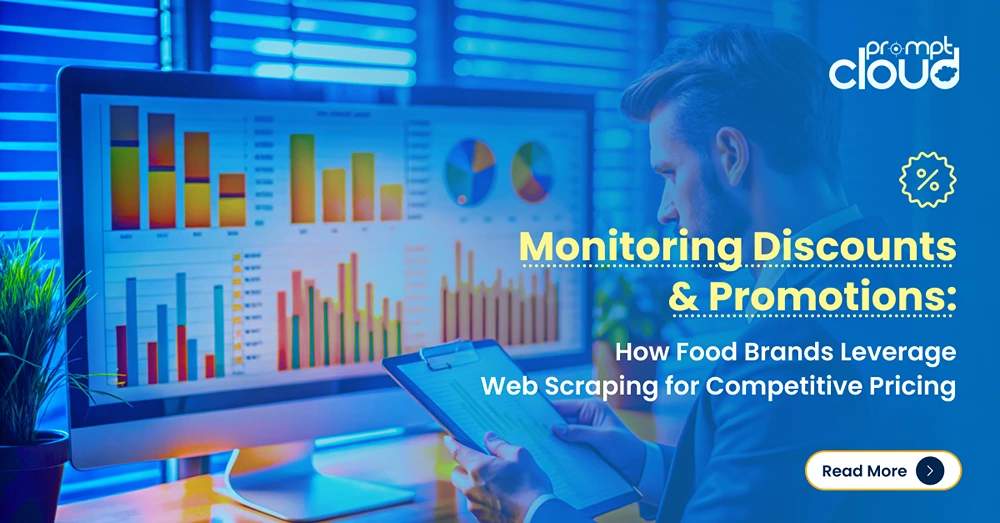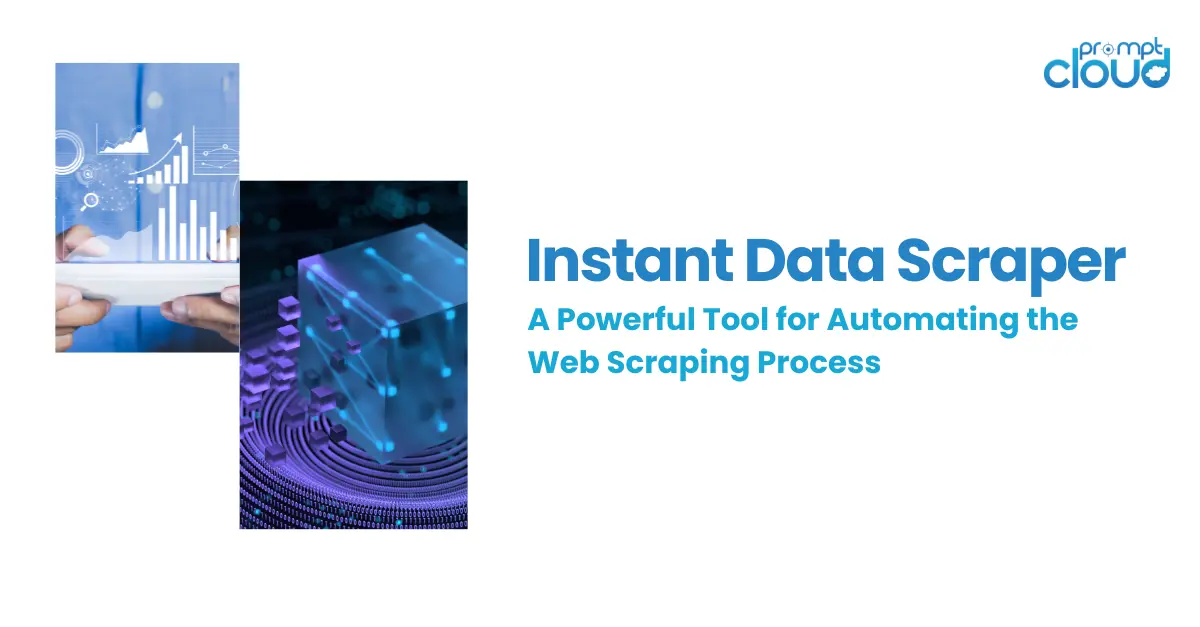
Web scraping has become an indispensable technique for individuals and businesses looking to extract valuable information from the web. Whether you’re a data scientist seeking datasets for analysis, a marketer looking for leads, or a journalist hunting for data stories, web scraping tools can be your golden key to the vast treasure trove of the internet. But with the plethora of tools available, how do you choose the right one for your specific needs?
Understanding Web Scraping
Before diving deep into the selection criteria, it’s essential to understand what web scraping entails. At its core, web scraping is the process of extracting data from websites. This is often done to gather data from various websites and compile it into a singular database or to analyze trends and patterns from the collected data.
Example: Imagine you’re starting an e-commerce business and want to understand your competitors’ pricing. Instead of manually visiting each competitor’s website and noting down prices, you can use a web scraping tools to extract this data automatically, saving you time and ensuring accuracy.
Open-source vs. Commercial Tools
There’s an ongoing debate on whether open-source tools or commercial ones are superior. Each comes with its own set of pros and cons:
- Open-source tools often have a strong community behind them. You can get help, modify the tool, or even contribute to its improvement. However, they might require more technical knowledge to set up and use.
- Commercial tools usually come with dedicated support, are more user-friendly, and often offer advanced features out of the box. The downside is the associated cost.
ScraperAPI is an effective web scraping tool with an extensive network of proxies and smart handling mechanisms for seamless data extraction. With over 90 million IPs from more than 200 countries, this tool stands out for its robust anti-blocking capabilities and user-friendly approach to web scraping.
Level of Expertise Required
Your technical background plays a crucial role in the selection process.
- Beginner-friendly tools have a graphical interface, allowing users to scrape data without writing a single line of code.
- Advanced tools like Scrapy or Beautiful Soup, while powerful, require programming knowledge.
Scalability and Performance
If you’re looking to extract data from a handful of web pages, performance might not be a major concern. However, if you’re looking at scraping hundreds or thousands of pages, you need a tool that’s scalable and performs efficiently.
Example: A research company might need to scrape data from thousands of academic journals. In this case, a robust and scalable tool will be indispensable.
JavaScript Rendering
Modern websites heavily rely on JavaScript to display content. Some scraping tools can only fetch the HTML of a webpage, missing out on content rendered via JavaScript. Ensure your chosen tool can handle JavaScript if your target sites rely on it.
Respect for robots.txt and Ethical Considerations
Web scraping isn’t just about fetching data; it’s also about respecting the digital space you’re entering. robots.txt is a file that websites use to communicate what bots are allowed or not allowed to do. Ethical web scrapers always respect these rules.
Additionally, frequent scraping requests can overload a website’s server, essentially leading to a denial-of-service attack. Choose tools that allow for setting delays between requests to avoid this.
Data Output Formats
Depending on your intended use for the scraped data, you’ll want to consider what output formats the tool supports. Common formats include CSV, JSON, and XML. Some tools might also allow direct integration with databases or cloud storage solutions.
Cloud-based vs. Local Scraping
- Cloud-based scraping tools operate on the cloud. This means you can set up your scraping task and let it run without keeping your computer turned on. They also offer better scalability and performance, but they come at a cost.
- Local scraping tools run on your machine. While they might be less powerful, they offer more privacy, as the data doesn’t leave your local environment.
Customer Support and Community
Having responsive customer support or an active community can be a lifesaver. Especially when you encounter issues or need guidance on more complex scraping tasks.
Cost
Last but certainly not least, consider the tool’s cost. While some tools are free, others might come with monthly subscription fees. Ensure the tool’s features and benefits align with its price.
Conclusion
Choosing the right web scraping tools or services isn’t a one-size-fits-all approach. Your specific needs, technical expertise, and intended scale of scraping should guide your decision. Remember to always scrape responsibly, respecting website terms and ethical considerations. With the right tool in hand, the vast expanse of the internet’s data awaits your exploration.
Frequently asked questions (FAQs)
What is Web scraper tool?
A web scraper tool is a software application designed to automatically extract data from websites. It navigates web pages much like a human would, but at a much faster pace, collecting specific information as instructed. This can range from product details on e-commerce sites to contact information on business directories. The collected data is then organized into a structured format, such as a spreadsheet or database, making it easier for users to analyze and utilize. Web scrapers are valuable in various fields for market research, price comparison, data aggregation, and more. However, it’s important to use these tools responsibly and adhere to legal and ethical guidelines, as scraping can sometimes conflict with website terms of service or data privacy regulations.
Which is the best tool for web scraping?
The “best” web scraping tool can vary depending on your specific needs, such as the complexity of the websites you’re scraping, your coding skills, and your budget. Here are some widely recognized tools:
- Beautiful Soup: Ideal for beginners, this Python library is great for parsing HTML and XML documents. It’s best suited for small-scale, static website scraping.
- Scrapy: A more advanced Python library, Scrapy is capable of handling large-scale web scraping. It’s versatile for both simple and complex scraping tasks and can process requests asynchronously.
- Octoparse: This is a user-friendly, no-code web scraping software, perfect for non-programmers. It allows you to scrape data without any coding.
- Puppeteer: Best for scraping dynamic websites that use JavaScript. Puppeteer is a Node library offering a high-level API over the Chrome DevTools Protocol.
- Selenium: Initially designed for automated web testing, Selenium is also effective for web scraping, especially for interactive sites requiring actions like logging in.
- ParseHub: A visual data extraction tool, ParseHub works well with single-page apps, multi-page apps, and other modern web technologies, requiring no programming skills.
- PromptCloud: A fully managed web scraping service that caters to large-scale and complex data extraction needs. PromptCloud uses advanced technologies and provides end-to-end solutions, including data delivery in ready-to-use formats. It’s ideal for businesses looking for a hassle-free, comprehensive web scraping service that doesn’t require in-house technical expertise.
Each tool offers unique features and capabilities. Your choice should be based on factors like ease of use, website complexity, whether the data is static or dynamic, and the scale of the scraping task. Additionally, it’s important to consider legal and ethical aspects of web scraping and to ensure adherence to website terms of service and data privacy laws.
Do hackers use web scraping?
Yes, hackers can use web scraping, but it’s important to differentiate between legitimate use of web scraping and its misuse by hackers.
Legitimate Uses of Web Scraping:
- Web scraping is widely used in legitimate contexts, such as data analysis, market research, search engine optimization, price comparison, and academic research.
- Businesses and researchers often use web scraping to gather publicly available data from websites in an efficient manner.
Misuse by Hackers:
- Hackers might use web scraping for malicious purposes. For example, they could scrape websites to collect personal data without consent, which could then be used for spamming, identity theft, or other fraudulent activities.
- They may also use scraping techniques to find vulnerabilities in websites, such as exposed email addresses or poorly secured data.
- Scraping can be used to automate the gathering of information in phishing attacks or to create fake profiles on social media platforms.
It’s crucial to note that the ethical and legal concerns surrounding web scraping depend heavily on the intention behind the scraping, the nature of the data being scraped, how the data is used, and whether it adheres to the website’s terms of service and data privacy laws. Legitimate users of web scraping tools typically ensure compliance with legal standards and respect data privacy, whereas hackers do not adhere to these ethical guidelines.
How do I use Web scraper in Chrome?
Using a web scraper in Chrome typically involves installing a web scraping extension. Here’s a step-by-step guide on how to do it:
Choose a Web Scraping Extension: There are various web scraping extensions available for Chrome, such as Web Scraper, Data Miner, or ParseHub. Choose one that suits your needs.
Install the Extension:
- Open the Chrome browser.
- Go to the Chrome Web Store.
- Search for the web scraping extension you have chosen.
- Click on ‘Add to Chrome’ to install the extension.
Set Up the Extension:
- After installation, you’ll see the extension’s icon in the top-right corner of the Chrome browser.
- Click on the icon to open the extension. Some extensions may require you to sign up or log in.
- Familiarize yourself with the interface of the extension. Many have tutorials or documentation to help you get started.
Navigate to the Target Website:
- Open a new tab and go to the website from which you want to scrape data.
- Ensure that scraping the website complies with its terms of service and data privacy laws.
Configure Your Scrape:
- Use the extension to select the data you want to scrape. This often involves clicking on the elements of the web page and defining patterns or paths.
- Some extensions allow you to specify the type of data extraction, such as text, links, or images, and how you want to traverse the site (pagination, links, etc.).
Run the Scrape:
- After setting up, execute the scraping task.
- The extension will then automate the process of collecting data from the website according to your configuration.
Export the Data:
- Once the scraping process is complete, you can usually export the data in various formats like CSV, Excel, or JSON.
- Check the output to ensure the data is correct and formatted as you need it.
Review and Comply with Legalities:
- Always ensure that your web scraping activities comply with legal and ethical standards.
- Respect robots.txt files, avoid overloading servers, and do not scrape protected or personal data without permission.
Remember, the exact process can vary depending on the extension you choose, and some complex scraping tasks may require advanced setup or scripting.



















